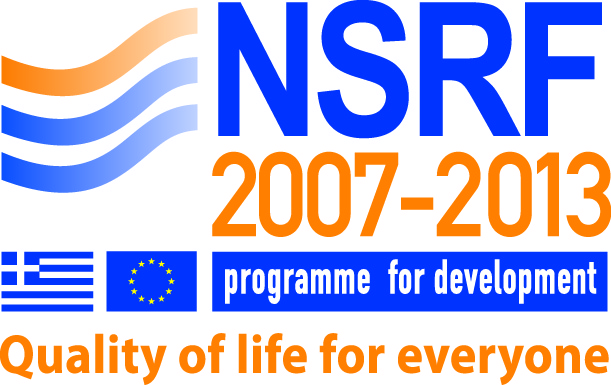Please use this identifier to cite or link to this item:
https://olympias.lib.uoi.gr/jspui/handle/123456789/39316Full metadata record
| DC Field | Value | Language |
|---|---|---|
| dc.contributor.author | Μπίλλιος, Ιωάννης | el |
| dc.date.accessioned | 2025-09-04T09:10:30Z | - |
| dc.date.available | 2025-09-04T09:10:30Z | - |
| dc.identifier.uri | https://olympias.lib.uoi.gr/jspui/handle/123456789/39316 | - |
| dc.rights | Attribution-NonCommercial-NoDerivs 3.0 United States | * |
| dc.rights.uri | http://creativecommons.org/licenses/by-nc-nd/3.0/us/ | * |
| dc.subject | Αλγόριθμοι | el |
| dc.subject | Τρισδιάσταση | el |
| dc.subject | Πολιτιστική κληρονομιά | el |
| dc.title | Αλγόριθμοι τρισδιάστατης ανακατασκευής μνημείων πολιτιστικής κληρονομιάς | el |
| heal.type | bachelorThesis | - |
| heal.type.en | Bachelor thesis | en |
| heal.type.el | Προπτυχιακή/Διπλωματική εργασία | el |
| heal.classification | Αλγόριθμοι | - |
| heal.dateAvailable | 2025-09-04T09:11:30Z | - |
| heal.language | el | - |
| heal.access | free | - |
| heal.recordProvider | Πανεπιστήμιο Ιωαννίνων. Σχολή Πληροφορικής και Τηλεπικοινωνιών. Τμήμα Πληροφορικής και Τηλεπικοινωνιών | el |
| heal.publicationDate | 2025 | - |
| heal.abstract | Η παρούσα εργασία έχει ως στόχο την εις βάθος μελέτη και πρακτική αξιολόγηση τεχνικών και αλγορίθμων τρισδιάστατης ανακατασκευής, με έμφαση στη χρήση τους για την τεκμηρίωση και διατήρηση μνημείων πολιτιστικής κληρονομιάς. Η ανάγκη για ψηφιακή διατήρηση πολιτισμικών αγαθών έχει ενταθεί τις τελευταίες δεκαετίες, καθώς η τρισδιάστατη αναπαράσταση αντικειμένων, κτιρίων και χώρων επιτρέπει τη δημιουργία ακριβών ψηφιακών αποτυπώσεων, οι οποίες μπορούν να αξιοποιηθούν σε περιβάλλοντα εικονικής περιήγησης, ψυχαγωγίας, εκπαίδευσης και επιστημονικής μελέτης, καθώς και σε διαδικασίες αποκατάστασης. Η εργασία ξεκινά με την παρουσίαση του θεωρητικού υπόβαθρου που διέπει την τρισδιάστατη ανακατασκευή, συμπεριλαμβανομένων βασικών εννοιών, ορολογίας, και την κατηγοριοποίηση των μεθόδων που χρησιμοποιούνται. Στη συνέχεια, εξετάζονται συγκεκριμένοι αλγόριθμοι όπως οι Structure from Motion (SfM), Multi View Stereo (MVS), Neural Radiance Fields (NeRF) και Gaussian Splatting, οι οποίοι αντιπροσωπεύουν διαφορετικές προσεγγίσεις και τεχνολογικές εξελίξεις στον χώρο. Ακολουθεί η εφαρμογή των αλγορίθμων αυτών σε επιλεγμένα σύνολα δεδομένων (datasets) που αφορούν πραγματικά μνημεία, με χρήση υπαρχόντων εργαλείων λογισμικού όπως COLMAP, MicMac, Instant-NGP και άλλα. Στην πορεία, καταγράφονται και αναλύονται τα αποτελέσματα κάθε ανακατασκευής με βάση τόσο ποσοτικά κριτήρια (πυκνότητα, χρόνος εκτέλεσης, ακρίβεια ως προς ground truth όπου είναι διαθέσιμος), όσο και ποιοτικά (οπτική πληρότητα, ανακατασκευή μικρών λεπτομέρειων, κάλυψη). Σκοπός της εργασίας είναι όχι μόνο η αξιολόγηση των επιδόσεων κάθε τεχνικής σε πρακτικά σενάρια, αλλά και η ανάδειξη της χρησιμότητάς τους ως εργαλεία για την προστασία και μελέτη της πολιτιστικής κληρονομιάς. | el |
| heal.abstract | This work aims at the in-depth study and practical evaluation of three-dimensional reconstruction techniques and algorithms, with emphasis on their use for the archival and maintenance of cultural heritage monuments. The need for digital preservation of cultural points of interest has been amplified in the recent decades, since three-dimensional reconstruction of objects, buildings and spaces allows for the creation of exact digital replicas, which can be utilised in virtual environments for guided tours, entertainment, training and scientific research, as well as preservation efforts. The essay starts with the presentation of the theoretical background that accompanies three-dimensional reconstruction, including basic concepts, terminology and the classification of the methods that are used. Afterwards, specific algorithms like Structure from Motion (SfM), Multi View Stereo (MVS), Neural Radiance Fields (NeRF) and Gaussian Splatting are examined, which represent different approaches and technological advancements in the field. Following is the application of these algorithms in specific datasets of real life monuments, using existing software such as COLMAP, MicMac, Instant-NGP and others. The results of each reconstructions are recorded and analysed, focusing on quantitative criteria (density, runtime, accuracy compared to ground truth when applicable) as well as qualitative criteria (visual faithfulness, replication of fine detail, coverage). The goal of the work is to not only evaluate the performance of each technique on practical scenarios but also the demonstration of their usefulness for the protection and study of cultural heritage. | en |
| heal.advisorName | Καρβέλης, Πέτρος | el |
| heal.committeeMemberName | Τζάλλας, Αλέξανδρος | el |
| heal.committeeMemberName | Γιαννακέας, Νικόλαος | el |
| heal.academicPublisher | Τμήμα Πληροφορικής και Τηλεπικοινωνιών | el |
| heal.academicPublisherID | uoi | - |
| heal.fullTextAvailability | true | - |
| Appears in Collections: | Προπτυχιακές εργασίες Τμ. Μηχανικών Πληροφορικής Τ.Ε. | |
Files in This Item:
| File | Description | Size | Format | |
|---|---|---|---|---|
| ΜΠΙΛΛΙΟΣ ΙΩΑΝΝΗΣ - ΠΛΗΡΟΦΟΡΙΚΗΣ ΚΑΙ ΤΗΛΕΠΙΚΟΙΝΩΝΙΩΝ.pdf | 62.54 MB | Adobe PDF | View/Open |
This item is licensed under a Creative Commons License





